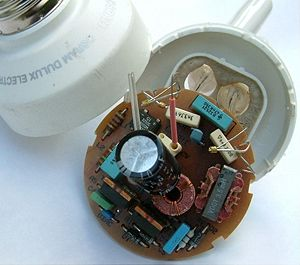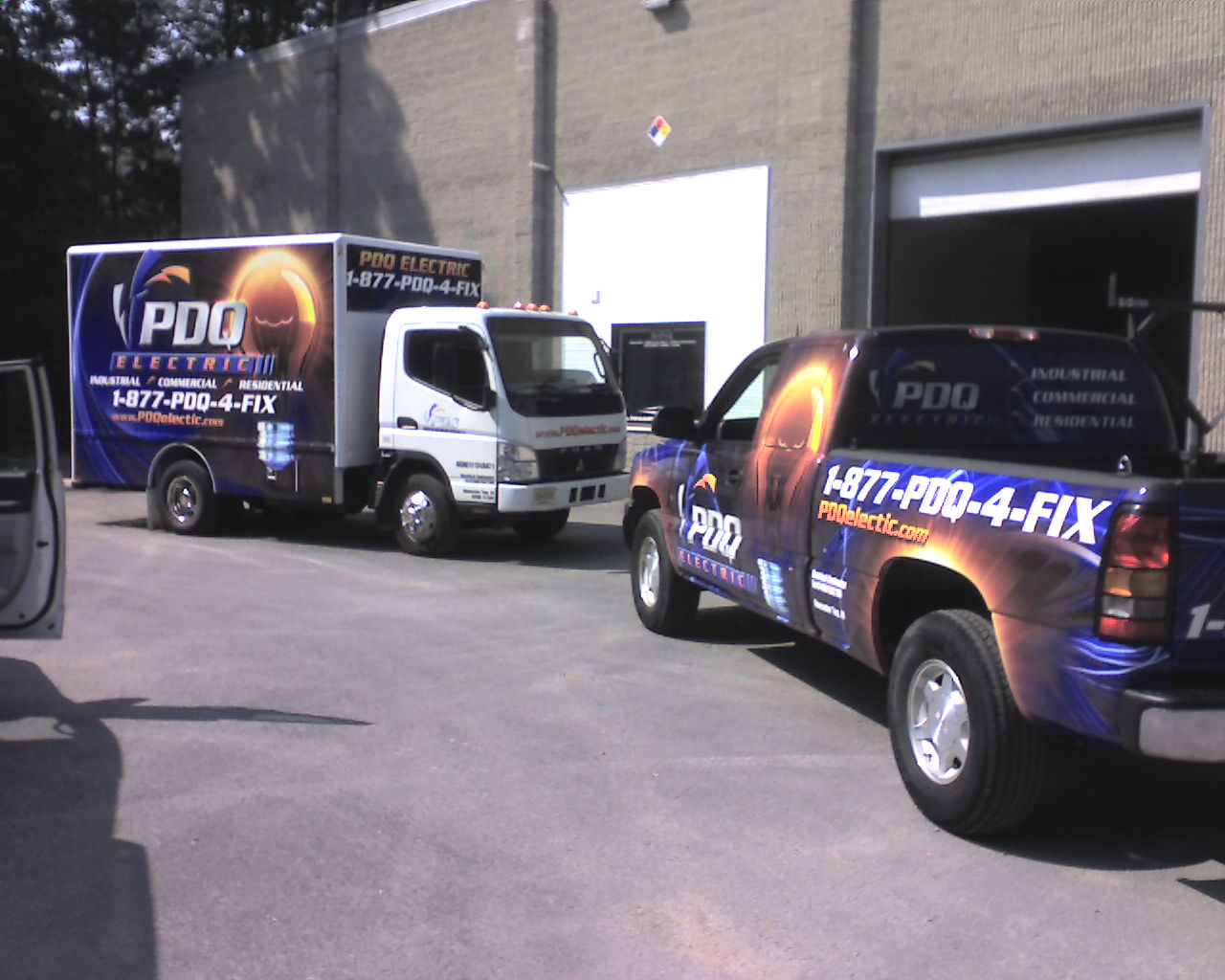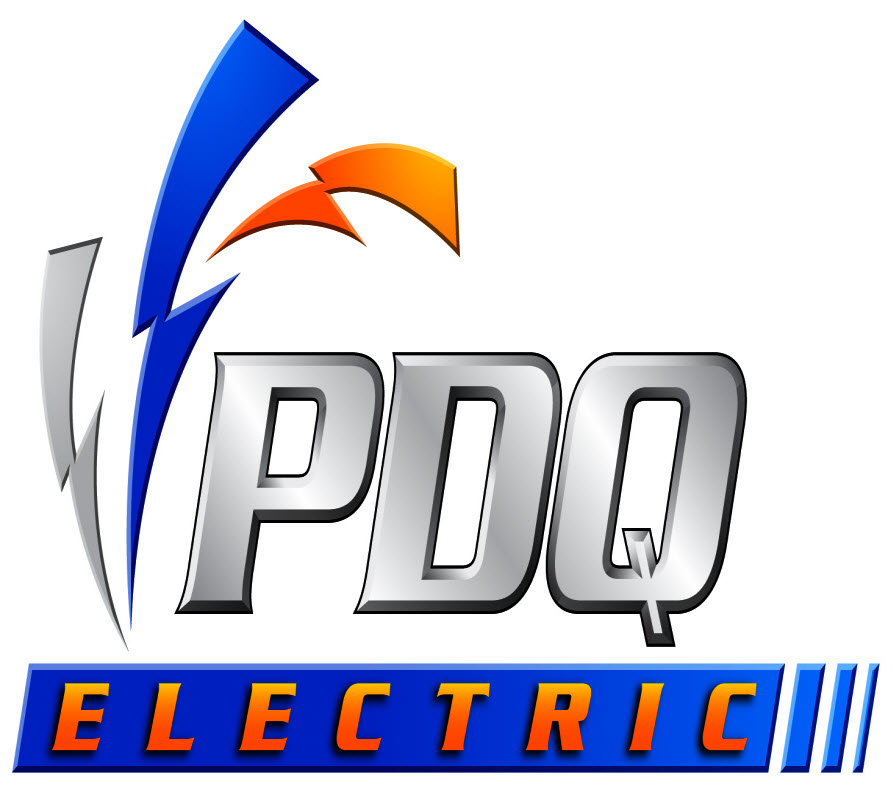PDQIE - PDQ Industrial Electric
Electronic Ballasts
INTRODUCTION
High-Intensity Discharge (HID) lighting has formed the core of lighting technology industry
for the last 20 or so years. Metal Halide (MH) and High-Pressure Sodium (HPS) lights are the most commonly used
variants of the HID family. This is no surprise as HID lights offer the most lumens per watt in practical lighting
systems. So what about fluorescent lamp (FL) technology? Well, in our opinion (also supported by most high-yield
professional growers) FLs just don't cut it when used alone in complete cycle growing. Although their spectrum is
fat and broad and can be tailored specifically to maximize lumen power in the most sensitive areas of the
photosynthetic curve (i.e. most PAR watts) their overall light output and price make them less than ideal
replacements for HID lights. Compact Fluorescent Lamps (CFLs) definitely have a place and used properly they
are an exceptional supplement to traditional high-lumen HID lights.
HIGH INTENSITY DISCHARGE (HID) LAMP TECHNOLOGY
High Intensity Discharge (HID) and Low-Intensity Discharge (LID), namely fluorescent
technology.
The HID light family contains both HPS and MH lights and is based on a structurally strong, double
envelope light with a compact arc tube operating under relatively high-pressure that emits light. Fluorescent
lights, on the other hand, have a long arc tube that operates at a relatively low pressure approximately equal to
one atmosphere.
HID lamps were designed for street, stadium, and industrial lighting. More recently, they have
become popular in horticultural lighting due to their ability to produce the most lumens (light power) per watt of
electricity. All HID lights share the common requirement for external ballast.
MAGNETIC BALLASTS:
The most popular type of
ballast is a magnetic ballast (large, heavy and cheap) and is technically referred to as a CWA (constant wattage
auto-transformer) type that and uses a magnetic auto-transformer to provide a voltage boost upon startup and in
conjunction with a capacitor, to provide current limiting to the bulb once ignition has taken place. Without the
ballast, the HID bulb could not ignite - and if it were to ignite, the bulb would burnout or explode without the
current limiting capabilities provided by the ballast as HID bulbs tend to draw as much power as they can, even if
this leads to self destruction (a phenomenon known as negative resistance). Therefore, it is critical that the
ballast power (wattage) rating match the HID bulb rating and be designed for the HID bulb type i.e. a 400W HPS
ballast must only be used with a 400W HPS bulb and cannot be used with a 400 W MH bulb or a 250W bulb or a 1000W
bulb etc. This is due to two factors:
1. STARTERS:
Popular MH bulbs have an internal
starter and do not require an external igniter, as is the case with HPS bulbs. As a result the electrical circuitry
in the HPS and MH ballast is different.
2. VOLTAGE:
HPS bulbs generally have a much higher
initial ignition and starting voltage that remains relatively constant regardless of their wattage. The electrical
values for HPS bulbs are approximately 2,000 to 5,000 volts for ignition and 350 volts for initial startup. MH
bulbs on the other hand vary greatly from approximately 55 volts for 50W bulbs to 340 Volts for a 1,000 W unit. MH
ignition voltages are also correspondingly lower. Exceptions to the interchangeability rule are electronic and
"switchable" ballasts.

ELECTRONIC (DIGITAL) BALLASTS:
These are a recent
introduction to the HID world and consist of a computerized digital circuit accompanied by associated support
components. They are more expensive than magnetic ballasts and offer automatic detection of HPS and MH bulbs so
that both bulb types can be accommodated. In general, they also offer improved light output as the bulb ages,
extend bulb life due to more accurate control over current, the appearance of a "flicker-free" light output due to
the electronic ballasts high-switching frequency (generally 15,000 Hz as opposed to 60Hz for the standard magnetic
ballast) and lastly, slightly improved efficiency (up to 8%) that leads to slightly reduced electrical costs.
Although electronic ballasts offer technical improvements over magnetic ballasts, their cost is approximately three
to five times higher than that of the magnetic ballast and is seldom used in any significant quantity.
Additionally, electronic ballasts are generally limited to a power rating of 400 watts with some (expensive)
600-watt models on the horizon.
SWITCHABLE HPS/MH BALLASTS:
Recently introduced,
these ballasts allow the use of both HPS and MH bulbs. They operate by simply switching the HPS igniter out of the
circuit. Generally, the switchable ballast consists of an HPS ballast with a switchable igniter. When an HPS bulb
is used, the igniter is switched into the circuit. When an MH bulb is used, the igniter is switched off or out of
the circuit. Although switchable ballast technology is simple, the user should exercise extreme caution because of
the different voltages that HPS and MH bulbs operate on.
SAFETY FIRST:
We do not recommend the use of
simple, home-brewed and simple switchable ballasts that only take the HPS igniter out of circuit when in MH mode.
Some readers may have the inclination to "make" switchable ballasts using a 1,000 watt HPS ballast core. Remember,
HPS and MH bulbs have different operating voltages and electrical characteristics, this makes them incompatible
with the idea of a simple switchable ballast. On certain occasions the MH bulbs have been known to rupture and
explode. Although you may know someone who has successfully deployed simple switchable 1,000-watt ballast, the
stress that this system places on the MH bulb can cause rapid breakdown, bulb integrity failure and fire. If you
must use a single ballast for powering both MH and HPS bulbs, choose an HPS ballast with HPS main lights
(Bloom/Flower) and purchase a few MH conversion bulbs to cover your vegetative cycle. Additionally with our new CFL
and HPS balanced spectrum technology, there is a reduced requirement for MH lights if the vegetative cycle is
short, i.e. in sea-of-green applications.
LONG-TUBE FLORESCENT
TECHNOLOGY:
Florescent-lighting dates back to 1938, and consists of a long arc tube that
operates at a very low pressure (also known as LID technology). Although quite a contrast to HID lighting,
florescent lights do share the common concept of an arc tube filled with an inert gas that contains a liquid metal
(mercury) powered through an external ballast. However, unlike HID technology, LID lights operate under completely
different parameters. The gas/metal mixture in the long arc tube ignites almost immediately and then produces a
cool arc that travels the length of the tube. The arc emits predominantly short-wave UV radiation. The internal
surface of the arc tube is coated with a UV sensitized phosphor that converts the arc 's UV radiation into visible
light. The composition of the coating is directly responsible for the "color" of this emitted light. Without this
coating, the UV radiation would appear almost invisible and be very harmful to virtually all-living organisms. In
fact UV based Ozone generators use modified, uncoated fluorescent bulbs in order to generate charged particles for
the purpose of air scrubbing. Since the coating determines the spectrum of visible emitted light, it is possible to
specifically design this coating to generate the desired spectrum of light. Practically however, integrating a four
foot or larger florescent tube that is rated at only 40 Watts into a garden is nightmarish. This is where CFL
technology comes in.
CFL TECHNOLOGY:
Developed circa 1980, CFL lights
have the same physical (low-heat) and broad spectrum benefits as long-tube fluorescent technology with the added
benefits of increased power, greatly reduced size and internal electronic ballasts that ensure log-life and tight
control over brightness. They are ideal light sources for a variety of applications and lend themselves well to
adoption into horticulture-when used properly. Fig 3 depicts a sample schematic of a common CFL internal power
supply.
ELECTRICAL BALLAST
An electrical ballast (sometimes called control gear) is a device intended to limit the amount of
current in an electric circuit.
Ballasts vary greatly in complexity. They can be as simple as a series resistor as commonly used
with small neon lamps or light-emitting diodes (LEDs). For higher-power installations, too much energy would be
wasted in a resistive ballast, so alternatives are used that depend upon the reactance of inductors, capacitors, or
both. Finally, ballasts can be as complex as the computerized, remote-controlled electronic ballasts now often used
with fluorescent lamps.
CURRENT LIMITING
Ballasts stabilize the current
through an electrical load. These are most often used when an electrical circuit or device presents a negative
(differential) resistance to the supply. If such a device were connected to a constant-voltage power supply, it
would draw an increasing amount of current until it was destroyed or caused the power supply to fail. To prevent
this, a ballast provides a positive resistance or reactance that limits the ultimate current to an appropriate
level. In this way, the ballast provides for the proper operation of the negative-resistance device by appearing to
be a legitimate, stable resistance in the circuit.
An example of a negative-resistance device is a gas-discharge lamp, where after lamp ignition,
increasing arc current reduces the voltage drop.
Ballasts can also be used simply to deliberately reduce the current in an ordinary,
positive-resistance circuit.
Prior to the advent of solid-state ignition, automobile ignition systems commonly included a
ballast resistor to regulate the voltage applied to the ignition system.
Although LEDs are positive resistance devices, they have insufficient resistance to regulate their
current consumption when operated from a voltage controlled source, so ballasts are used to control the current
through the LED. Because the power dissipation is minuscule, simple resistor ballasts are normally used.
RESISTORS
A ballast resistor compensates for
normal or incidental changes in the physical state of a system. It may be a fixed or variable resistor.
FIXED RESISTORS
For simple, low-powered loads such
as a neon lamp or LED, a fixed resistor is commonly used. Because the resistance of the ballast resistor is large
it dominates the current in the circuit, even in the face of negative resistance introduced by the neon lamp.
The term also refers to an automobile engine component that lowers the supply voltage to the
ignition system after the engine has been started. Because cranking the engine causes a very heavy load on the
battery, the system voltage can drop quite low during cranking. To allow the engine to start, the ignition system
must be designed to operate on this lower voltage. But once cranking is completed, the normal operating voltage is
regained; this voltage would overload the ignition system. To avoid this problem, a ballast resistor is inserted in
series with the supply voltage feeding the ignition system. Occasionally, this ballast resistor will fail and the
classic symptom of this failure is that the engine runs while being cranked (while the resistor is bypassed) but
stalls immediately when cranking ceases (and the resistor is re-connected in the circuit).
Modern electronic ignition systems do not require a ballast resistor as they are flexible enough to
operate on the low cranking voltage or the ordinary operating voltage.
In some old AC/DC receivers (universal sets), the vacuum tube heaters are connected in series.
Since the voltage drop across all the filaments in series is sometimes less than the full mains voltage, it was
often necessary to get rid of the excess voltage. A ballast resistor was often used for this purpose, as it was
cheap and worked with both AC and DC.
SELF-VARIABLE RESISTORS
Some ballast resistors
have the property of increasing in resistance as current through them increases, and decreasing in resistance as
current decreases. Physically, some such devices are often built quite like incandescent lamps. Like the tungsten
filament of an ordinary incandescent lamp, if current increases, the ballast resistor gets hotter, its resistance
goes up, and its voltage drop increases. If current decreases, the ballast resistor gets colder, its resistance
drops, and the voltage drop decreases. Therefore the ballast resistor reduces variations in current, despite
variations in applied voltage or changes in the rest of an electric circuit. These devices are sometimes termed
barretters.
This property can lead to more precise current control than merely choosing an appropriate fixed
resistor. The power lost in the resistive ballast is also reduced because a smaller portion of the overall power is
dropped in the ballast compared to what might be required with a fixed resistor.
In times past, household clothes dryers sometimes incorporated a germicidal lamp in series with an
ordinary incandescent lamp; the incandescent lamp operated as the ballast for the germicidal lamp. A commonly used
light in the home in the 1960s in 220-240V countries was a circleline tube ballasted by an under-run regular mains
filament lamp. Self ballasted mercury-vapor lamps incorporate ordinary tungsten filaments within the overall
envelope of the lamp to act as the ballast, and it supplements the otherwise lacking red area of the light spectrum
produced.
REACTIVE BALLASTS
Because of the power that would
be lost, resistors are not used as ballasts for lamps of more than about two watts. Instead, a reactance is used.
Losses in the ballast due to its resistance and losses in its magnetic core may be significant, on the order of 5
to 25% of the lamp input wattage. Practical lighting design calculations must allow for ballast loss in estimating
the running cost of a lighting installation.
An inductor is very common in line-frequency ballasts to provide the proper starting and operating
electrical condition to power a fluorescent lamp, neon lamp, or high intensity discharge (HID) lamp. (Because of
the use of the inductor, such ballasts are usually called magnetic ballasts.) The inductor has two benefits:
1. Its reactance limits the power available to the lamp with only minimal power losses in the
inductor
2. The voltage spike produced when current through the inductor is rapidly interrupted is used in
some circuits to first strike the arc in the lamp.
A disadvantage of the inductor is that current is shifted out of phase with the voltage, producing
a poor power factor. In more expensive ballasts, a capacitor is often paired with the inductor to correct the power
factor. In ballasts that control two or more lamps, line-frequency ballasts commonly use different phase
relationships between the multiple lamps. This not only mitigates the flicker of the individual lamps, it also
helps maintain a high power factor. These ballasts are often called lead-lag ballasts because the current in one
lamp leads the mains phase and the current in the other lamp lags the mains phase.
For large lamps, line voltage may not be sufficient to start the lamp, so an autotransformer
winding is included in the ballast to step up the voltage. The autotransformer is designed with enough leakage
inductance so that the current is appropriately limited.
Because of the large inductors and capacitors that must be used, reactive ballasts operated at line
frequency tend to be large and heavy. They commonly also produce acoustic noise (line-frequency hum).
Prior to 1980 in the United States, PCB-based oils were used as an insulating oil in many ballasts
to provide cooling and electrical isolation.
ELECTRONIC BALLASTS
An electronic lamp ballast
uses solid state electronic circuitry to provide the proper starting and operating electrical condition to power
one or more fluorescent lamps and more recently HID lamps. Electronic ballasts usually change the frequency of the
power from the standard mains (e.g., 60 Hz in U.S.) frequency to 20,000 Hz or higher, substantially eliminating the
stroboscopic effect of flicker (a product of the line frequency) associated with fluorescent lighting (see
photosensitive epilepsy). In addition, because more gas remains ionized in the arc stream, the lamps actually
operate at about 9% higher efficacy above approximately 10 kHz. Lamp efficacy increases sharply at about 10 kHz and
continues to improve until approximately 20 kHz.[3] Because of the higher efficiency of the ballast itself and the
improvement of lamp efficacy by operating at a higher frequency, electronic ballasts offer higher system efficacy.
In addition, the higher operating frequency means that it is often practical to use a capacitor as the
current-limiting reactance rather than the inductor required at line frequencies. Capacitors tend to be much lower
in loss than inductors, allowing them to more closely approach an "ideal reactance".
Electronic ballasts are often based on the SMPS topology, first rectifying the input power and then
chopping it at a high frequency. Advanced electronic ballasts may allow dimming via pulse-width modulation and
remote control and monitoring via networks such as LonWorks, DALI, DMX-512, DSI or simple analog control using a
0-10V DC brightness control signal.
FLUORESCENT LAMP BALLASTS
INSTANT START
An instant start ballast starts
lamps without heating the cathodes at all by using high voltage (around 600 V). It is the most energy efficient
type, but gives the least number of starts from a lamp as emissive oxides are blasted from the cold cathode
surfaces each time the lamp is started. This is the best type for installations where lamps are not turned on and
off very often.
RAPID START
A rapid start ballast applies voltage
and heats the cathodes simultaneously. Provides superior lamp life and more cycle life, but uses slightly more
energy as the cathodes in each end of the lamp continue to consume heating power as the lamp operates. A dimming
circuit can be used with a dimming ballast, which maintains the heating current while allowing lamp current to be
controlled.
PROGRAMMED START
A programmed-start ballast is a
more advanced version of rapid start. This ballast applies power to the filaments first, then after a short delay
to allow the cathodes to preheat, applies voltage to the lamps to strike an arc. This ballast gives the best life
and most starts from lamps, and so is preferred for applications with very frequent power cycling such as vision
examination rooms and restrooms with a motion detector switch.
BALLAST FACTOR
For a lighting ballast, the ballast
factor is defined as the light output (in lumens) with a test ballast, compared to the light output with a
laboratory reference ballast that operates the lamp at its specified nominal power rating.[4][5] The ballast factor
of practical ballasts must be considered in lighting design; a low ballast factor may save energy, but will produce
less light. With fluorescent lamps, an electronic ballast may produce more light than the reference test ballast,
which operates the lamp with line frequency current; such electronic ballasts have a ballast factor greater than
one.
Call PDQIE for an Evaluation of Your Electronic Ballast
Applications (877) PDQ-4-FIX
|  Industrial - Commercial
Industrial - Commercial  Electrical
Contractor
Electrical
Contractor 

